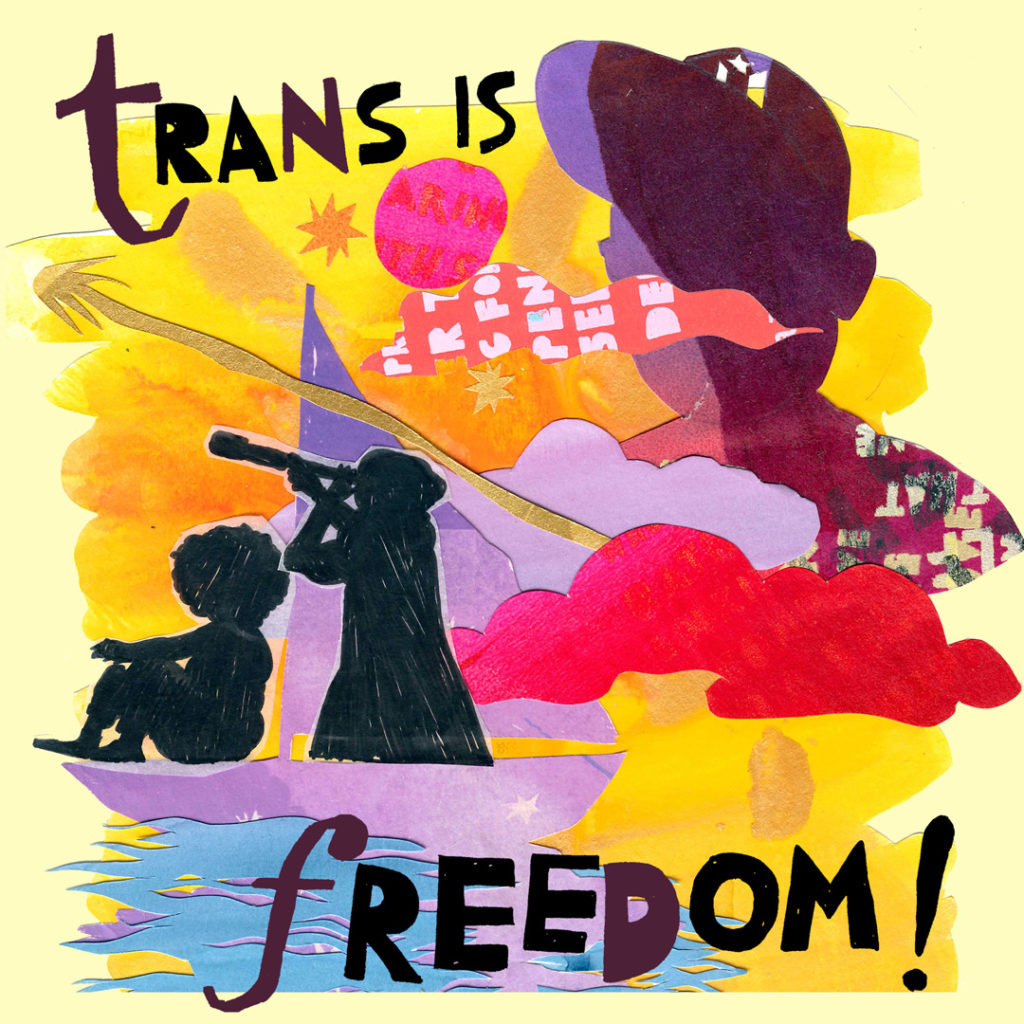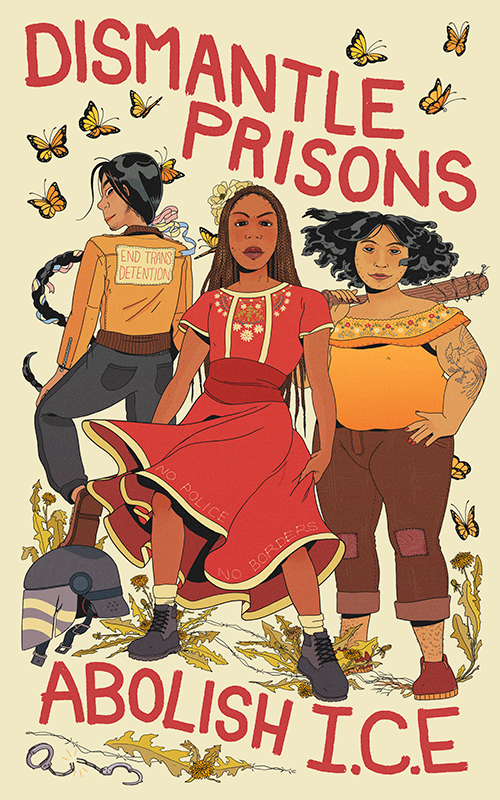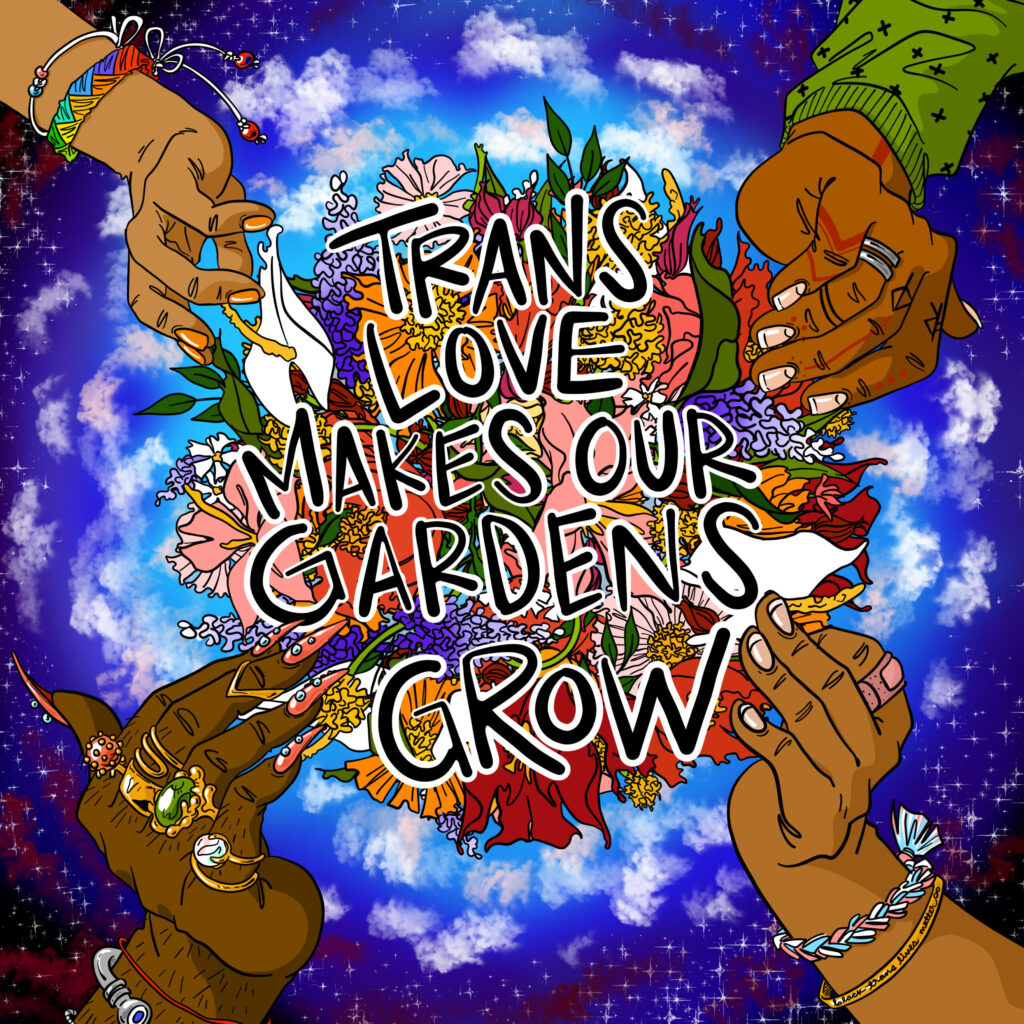Building Irresistible Movements
Best Collaboration Practices for Organizations and Visual Artists
This guide was created by Kemi Alabi, Micah Bazant, Kate DeCiccio, Amir Khadar, Diana Lugo-Martinez, Monica Trinidad and Kah Yangni in partnership with Forward Together.
Ready to Make Magic? Download Our Guide & Resources
We’re making Building Irresistible Movements available for free to artists and organizers who want to work together to harness the power of culture and transform our world. Sign up for your free guide & resources:
Short on time? Download our or read it below.
Introduction
Identify your project goals and strategies
- What are the specific goals?
- Who needs to tell the story?
- Who is the audience?
- Where and when are the most strategic points of dissemination?
- How can we move our audiences to action and increase impact?
- How can we build relationships of repair, trust and reciprocity through every step of the process—from creative conception to collaboration and dissemination?
Find collaborators through ethical artist selection

- No contests or spec work. Use open calls. Avoid exploitative recruitment practices that require unpaid labor. Open calls let artists apply for paid projects by submitting existing work for review as a demonstration of their skill. Ask for 3 to 5 work samples and keep any written questions brief and low-pressure.
- Do not use AI-generated art. It exploits the work of human artists and destroys our livelihoods.
- Who the artist is changes what the work does. Their story, relationships and struggles all shape what their work means to us. Prioritize working with artists from the marginalized communities you aim to reach.
- Focus on quality of work, not resumes or follower counts. With the right art direction and support, emerging movement artists can build their skills and produce powerful work.
Use fair fee structures that value art labor
- Never offer exposure as compensation or expect artists to volunteer.
- Pay artists based on the scope of work, not their fame, reach or follower counts.
- Rush all payments to artists. Pay a 25- to 50-percent deposit at the start of a project.
- Create a payment and contract process that honors artists’ names.
- Compensate artists for commissioned social media labor.
- Always allow artists to retain copyright of their work. Use fair contracts that grant the organization rights to license or co-own the work.
- Use our fair and fee chart (below) for minimum rates.
Fee Structure for Illustration based on Organizational Budget
|
Organization’s Annual Budget |
One Original Collaborative Graphic Artwork By a professional graphic artist or illustrator (approximately 30 to 40 hours of work) Usage: Artist retains copyright. Image licensed to organization for unlimited use. Includes: One collaborative visioning meeting; up to two rounds of major revisions to artistic direction; up to three rounds of minor revisions. Does not include: Rush work, unlimited usage, media promotion, additional revisions or more extensive collaborative process. |
|---|---|
| Under $250k | $1,000 minimum ($25/hr for 40 hours1) |
| $250k–$500k | $1,250 minimum ($31.25/hr for 40 hours) |
| $500k—$1 million | $1,500 minimum ($37.50/hr for 40 hours) |
| > $1 million | $2,000 minimum ($50/hr for 40 hours) |
| > $5 million | $2,500 minimum ($62.50/hr for 40 hours) |
- Hourly wage minimums informed by the Living Wage Calculator by Dr. Amy K. Glasmeier and the Massachusetts Institute of Technology @2024
Facilitate a process that taps into the magic of all involved
![[Image Descripton: Illustration of three Black femme figures with interconnected braids and glowing eyes, holding hands in front of a large moon-like circle. One holds a flowering branch, one holds a shimmering sword, and they are all standing in a glowing circle of flowers. Text at the top says “We Keep Each Other Safe”. The line below says “Nonconformers – Goddexxes – Sisters”. In the background is a swirling dark purple storm.]](https://forwardtogether.org/wp-content/uploads/2020/11/we_keep_amir_khadar-639x1024.jpg)
- Train your entire staff on the values of cultural strategy. When everyone is oriented to cultural power, they can recognize opportunities for impactful artist collaboration.
- Include artists from the beginning. When you work with artists who are part of your target audience, they will often know how art could be most powerfully received and have networks that can help launch the work. This is an opportunity to anticipate crucial details from community buy-in to messaging to printing sources.
- Set process expectations. How often will the organization and artist communicate? Balancing the expertise of all involved, how will final decisions about imagery and messaging be made? Set a maximum number of rounds for feedback and revision.
- Decide on text at the start. It can take 8 to 16 hours to reconfigure an image to include text. Generally messages that are ten words or less are strongest.
- Support new artists to develop technical skills. Include specifications about dimensions, bleed, resolution, color mode and logos in the contract and review them with the artists at the start.
- Avoid rush work and allow artists ample time to create. A month is a minimum amount of time for an experienced artist to complete a poster commission that is not a rush job; two months is spacious for newer artists and deeper collaboration. If rush work is unavoidable, organizations should pay an additional fee.
- Confront power dynamics. Is the artist part of a marginalized community that is not in leadership in the organization or project? Is the artist representing people other than themselves? Make sure they are working with people who are part of the represented community, either within or outside your organization.
- If you are working with a group of artists, create space for them to connect. At minimum, this could be a group email or initial meeting to meet each other. Artists can build on this connection throughout your project and beyond.
- Consider a process for community input. Collaboration increases the likelihood the artwork will be meaningful to and used by grassroots groups and community members. Compensate and credit external partners for their expertise and work.
Art Direction and Feedback
Great art direction sees what’s strong in artists’ work—what we are capable of—and lovingly redirects us toward these strengths if we get lost.
- Provide concrete art direction. Let artists know what specific elements you love in their past work that you’d like to see. You can also share examples of other inspiration or the context of the story you’re trying to tell with the art.
- Share concrete affirmations throughout the process. It can be daunting to receive a list of “no’s” and have to guess what is working. Prioritize written affirmation that is as pointed as critiques. Let artists know specifically what is working; refer to the initial art direction.
- Micromanagement isn’t a creative love language. Artists produce stronger work when we have more autonomy to pursue our own style and vision.
- Let the art live outside your box. Art is powerful because it is not an exact, literal representation. Allow the art to be unexpected, strange, magical and new. Communicate your needs without squishing the spirit of the art or artist.
- Let unfinished work breathe. Avoid rushing artists toward a finish line. Time can be the secret ingredient.
- If you are working with a group of artists, consider asking the artists to give each other feedback, and include this in the paid scope of work.
Strategic and Ethical Distribution

- Create a distribution plan based in your key goals and strategy. Where are the most strategic points of impact and dissemination? What current events, history, or observances can we connect with to help fuel dissemination and create meaning.
- Release the art with your call to action. Don’t share the art until all the action tools are ready, and then make sure that wherever people see the art, they see the call to action.
- Engage artists as outreach partners. Bringing artists into your outreach strategy can both teach new skills to emerging artists and create more channels of amplification for your project, especially if the artists are part of your target audiences.
- Share ownership of the work. If you are collaborating with directly impacted organizations or people, and the artwork exists in part because of their struggle and lived experience, share ownership of the work (e.g., sharing credit, original files, profits).
- Create channels for feedback between communities, organizations and artists. Imagine creative ways to invite reactions and stories of impact when you share the art.
- Support artists to set up the building blocks of their career. A brief artist bio, artist statement, headshot, professional website and/or online store, and public/professional social media accounts will help you share their work in meaningful ways.
- Offer prints to artists. If you can print extra, give some to the artist to sell. The cost of printing each piece goes down when we print in greater quantities, so this arrangement may benefit all parties.
- Never alter artwork without permission. If your organization would like to potentially make changes to the artwork in the future, include these parameters in the contract.
- Always credit and uplift artists and creative partners. Tag and credit the relevant contributors when sharing their work on social media. Share websites, stores and accounts whenever you can.
- Make digital images more accessible. Always add alt text and image descriptions. Refer to guidelines from Social Media Access 101 by @higher_priestess.
- Make printed images more accessible. For exhibits and events, aim to make the space as accessible as possible. See Sins Invalid’s Access Suggestions for a Public Event.
Keep Building

- Ask for artists’ feedback at the end of the project. How could the process have gone better? What worked? Factor the artists’ time giving feedback into the scope of work.
- Let artists know how their work is used in the world. Knowing the impact fuels the work; it gives artists purpose and meaning to know we’re reaching communities we care about.
- Keep amplifying the work. Take every opportunity to reuse, adapt, and share. Think creatively—consider annual and current events, make sketches into coloring pages, etc.
- Build ongoing, non-tokenizing relationships with artists. Artists’ work is often in highest demand during annual events or crises related to our identities. Build long-term, reciprocal relationships with artists beyond these flashpoints.